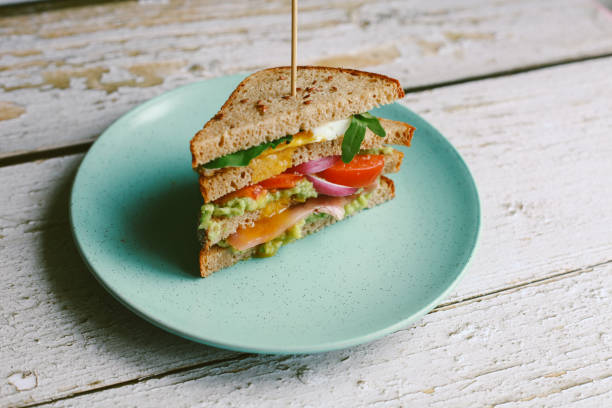Understanding Keto Bread
Keto bread differs from traditional bread primarily due to its low carbohydrate content.
Instead of wheat flour, keto bread recipes use alternative flours such as almond or coconut flour, which significantly reduce the carb count, making it a perfect fit for the ketogenic diet.
Key Ingredients
- Almond Flour: High in protein and low in carbs, almond flour is the cornerstone of many keto bread recipes. In South Africa, almond flour is available in most health stores and supermarkets.
- Coconut Flour: Another popular choice for keto baking, coconut flour adds a lovely texture and slight sweetness to the bread.
- Psyllium Husk: This provides the bread with the necessary fibre and helps in binding the ingredients together, mimicking the texture of traditional bread.
- Baking Powder: Essential for helping the bread rise.
- Eggs: They add structure and richness to the bread.
- Butter or Olive Oil: For moisture and flavour.
- Salt: To enhance all the flavours.
Recipe: Basic Keto Bread
This basic keto bread recipe is designed for beginners and uses ingredients that are easily accessible in South Africa.
It yields approximately 10-12 slices, serving around 5-6 people.
Ingredients:
- 200g almond flour
- 50g coconut flour
- 10g (about 2 tsp) psyllium husk powder
- 15g (1 tbsp) baking powder
- 5 large eggs
- 100g butter (melted and cooled) or olive oil
- 240ml warm water
- 1 tsp salt
Instructions:
Preparing the Dough
Preheat Oven: Start by preheating your oven to 180°C.
This is a moderate temperature that allows the bread to cook through without burning the outside.
Dry Ingredients: In a large mixing bowl, whisk together the almond flour, coconut flour, psyllium husk, baking powder, and salt.
Ensuring these ingredients are well mixed will lead to a more uniform bread texture.
Wet Ingredients: In a separate bowl, beat the eggs lightly before adding the melted butter (or olive oil) and warm water.
The warmth of the water and melted butter helps to activate the baking powder, leading to a better rise in your bread.
Combine: Gradually pour the wet mixture into the dry ingredients, stirring continuously to avoid any lumps.
The dough will start to thicken as the psyllium husk absorbs the moisture.
Baking the Bread
Shape the Dough: Transfer the dough into a greased loaf pan.
You can use a silicone spatula to smooth the top and give it a nice, even shape.
Bake: Place the loaf pan in the preheated oven and bake for about 45-50 minutes.
The bread is done when it has a golden-brown crust, and a toothpick inserted into the centre comes out clean.
Cooling: Allow the bread to cool in the pan for about 10-15 minutes before transferring it to a wire rack.
It’s crucial to let the bread cool completely before slicing to prevent it from crumbling.
Serving and Storage
Serving: Keto bread is incredibly versatile.
Enjoy it toasted with butter, use it for sandwiches, or serve alongside soup or salad.
Storage: Store the bread in an airtight container at room temperature for up to 3 days.
For longer storage, slice and freeze the bread, thawing slices as needed.
Tips for Success
- Measure Accurately: Use digital scales for precise measurements, especially for the flours and psyllium husk.
- Egg Size Matters: Large eggs are preferable as they provide enough moisture and binding for the bread.
- Oven Calibration: Ensure your oven temperature is accurate. An oven thermometer can help with this.
- Customisations: Feel free to add herbs like rosemary or thyme to the dough for a flavourful twist.
Conclusion
Making keto bread at home is a rewarding and delicious way to maintain your ketogenic lifestyle without sacrificing the pleasures of bread.
This guide provides a straightforward recipe that beginners can easily follow, ensuring a successful baking experience.
Enjoy the warm, comforting aroma of freshly baked bread filling your kitchen, all while keeping your carbs in check!

